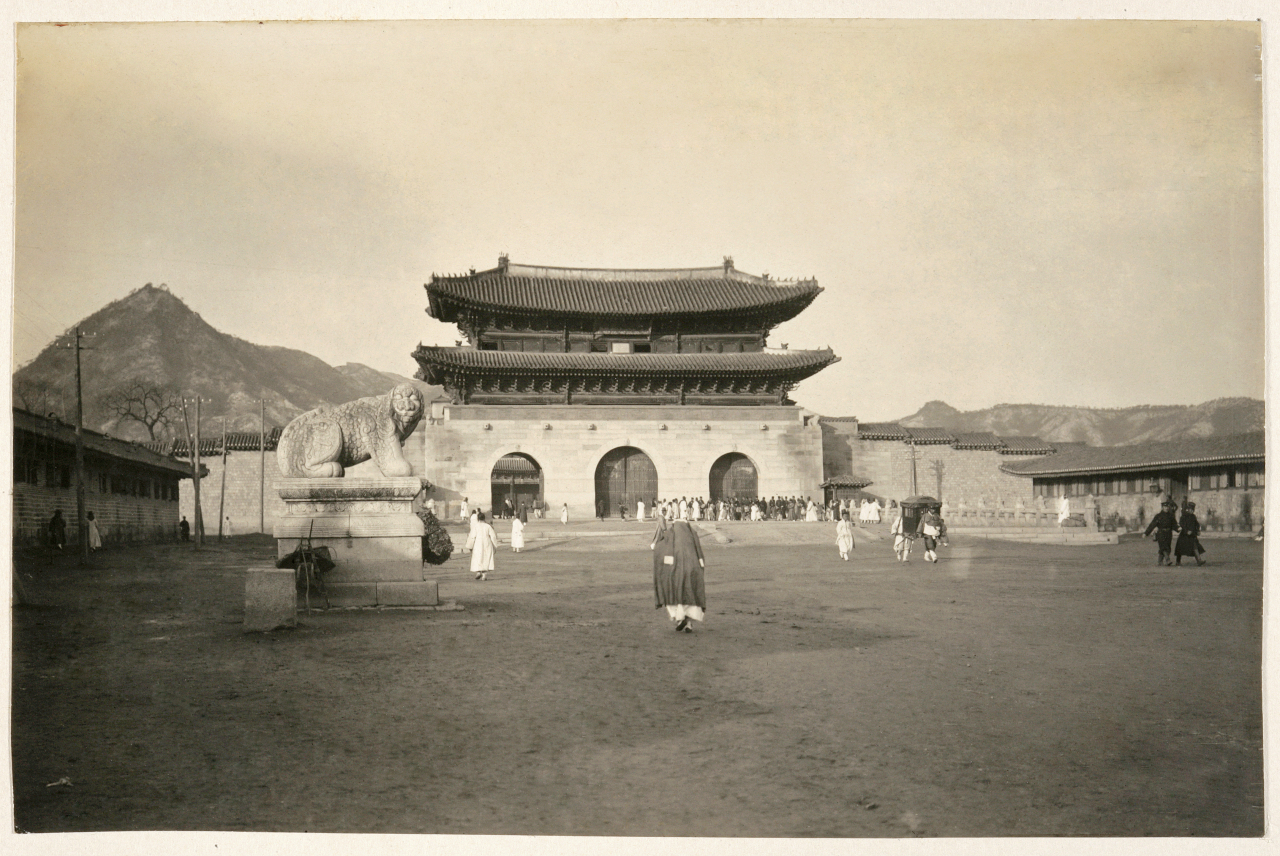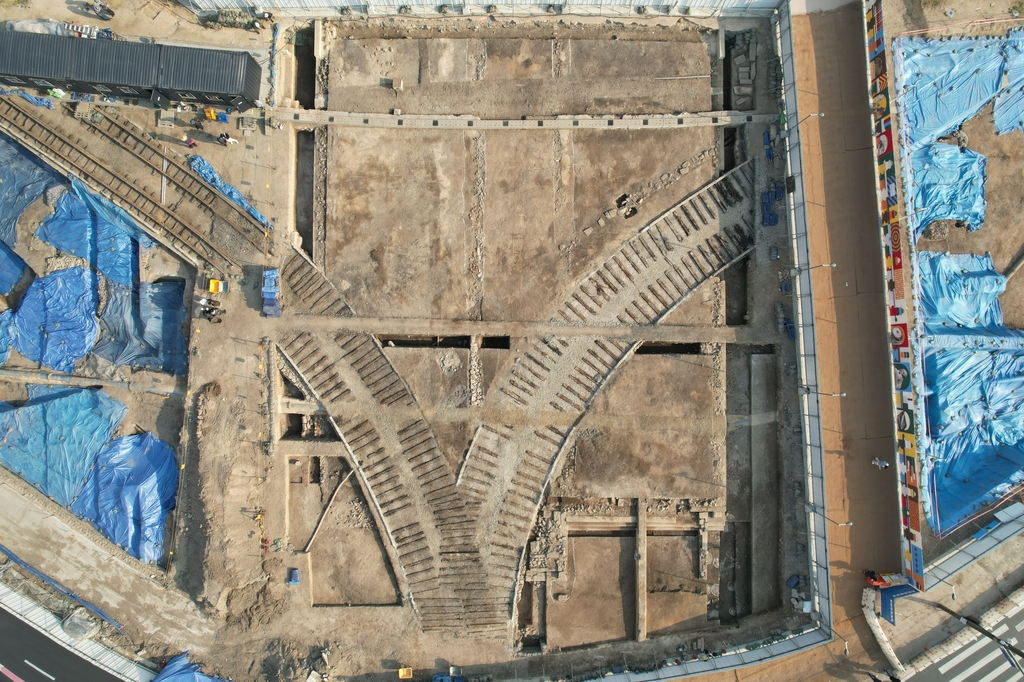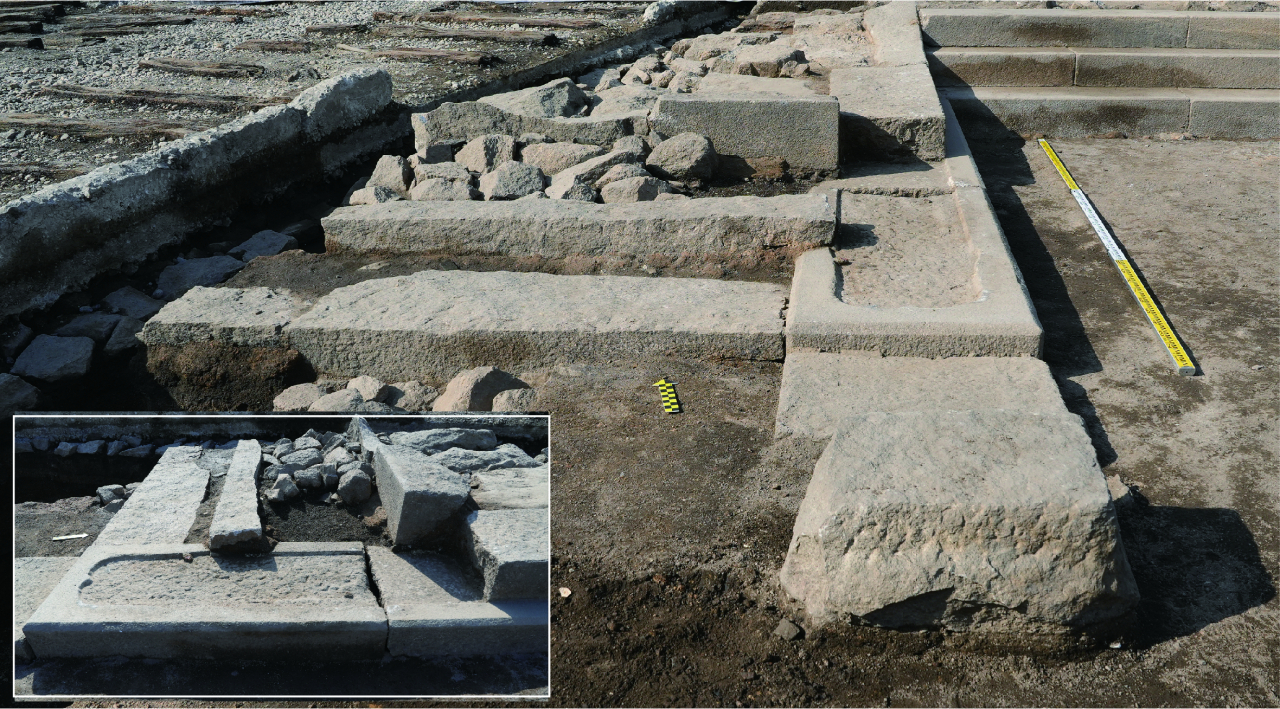Gwanghwamun's Joseon-era 'woldae' to be restored by October
By Kim Hae-yeonPublished : April 25, 2023 - 15:46

The restoration project of Gwanghwamun's "woldae," an elevated stage for royal rituals and ceremonies located in front of Gyeongbokgung's main gate, will be completed by October to be opened to the public.
The Cultural Heritage Administration announced partial findings from the woldae's ongoing excavation and restoration project, which started in the 1990s, at a press conference held at the National Palace Museum of Korea on Tuesday.
Although the exact time of the woldae's construction is unknown, records of its existence date back to King Gojong's reign (1863-1907) during the Joseon era (1392-1910), according to the Seoul National Research Institute of Cultural Heritage. In the "Daily Record of the Construction of Gyeongbokgung Palace" or "Gyeongbokgung Yeonggeon Ilgi," a line inscribed on March 1866 depicts how Gwanghwamun's woldae was built using materials from within the palace.
The CHA announced that the total size of the original woldae measured 48.7 meters in length and 29.7 meters in width. A separate path for the king, known as "eodo," was formed at the center that connects to the palace's main gate and is presumed to be 7 meters wide.

"Simply put, in modern terms, the woldae acted as a 'grand stage' where the king's servants would bring their horses before entering the royal palace, and where foreign envoys were first greeted by the king," said Shin Hee-kweon, Korean history professor at the University of Seoul and the woldae project’s adviser. The king had to pass through the woldae in order to step outside the palace, which meant that the place served as a meeting point between the king and the public, according to Shin.
"Traditional music and performances would have been conducted on the stage from time to time. For instance, 'sandae noli' was performed at the woldae when Ming envoys visited Joseon. The public passing by could also view and hear about the performances," Shin added.
In September last year, a tram track used during the Japanese colonial period (1910-1945) was discovered at the woldae excavation site.

The tram was in service from 1917 to 1966, and ran on a Y-shaped train track on what is today's Sejong-ro, connecting Anguk-dong and Hyoja-dong via Woldae.
The eodo part of the woldae had been destroyed during the 1910s, and by the mid-1920s, the stage had been completely torn down, according to the CHA's findings.
"Traces at the western side of the woldae are more damaged than the eastern side. The stairs of the eodo (part) are also heavily erased due to the tram tracks built," said Chun Eui-geon, an official in the CHA restoration division. The official added that CHA will work with cultural heritage restoration experts in the field to study and utilize traditional materials and methods in the restoration process.
Similar woldae were also built by Gyeongbokgung's Geunjeongjeon and Changdeokgung's Donhwamun Gate, but the Gwanghwamun woldae is the only one that is situated in front of the royal palace's main gate and has stone railings and stylobate platforms.

















![[KH Explains] Hyundai's full hybrid edge to pay off amid slow transition to pure EVs](http://res.heraldm.com/phpwas/restmb_idxmake.php?idx=652&simg=/content/image/2024/04/18/20240418050645_0.jpg&u=20240418181020)

![[Today’s K-pop] Zico drops snippet of collaboration with Jennie](http://res.heraldm.com/phpwas/restmb_idxmake.php?idx=642&simg=/content/image/2024/04/18/20240418050702_0.jpg&u=)